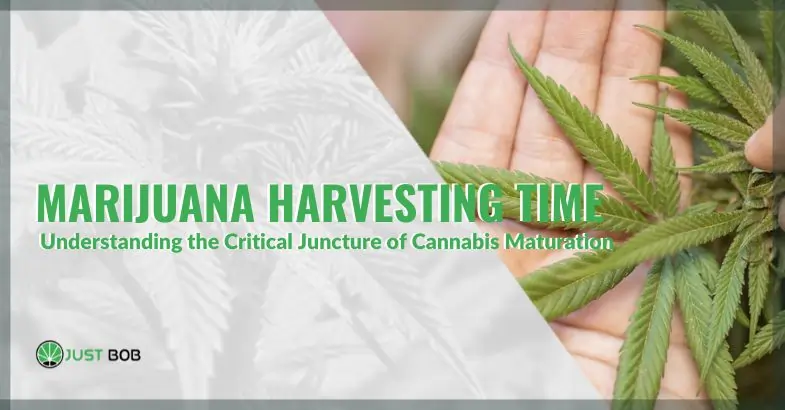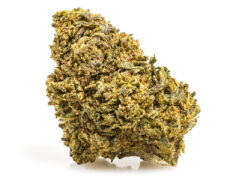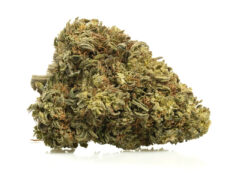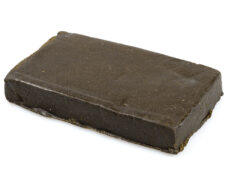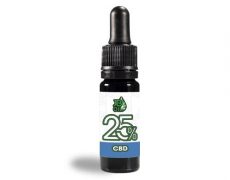Published on: 10/01/2025
Understanding the Critical Juncture of Cannabis Maturation
The culmination of months of careful cultivation hinges on the precise moment of harvest. This juncture, often anticipated with great eagerness, is not simply about the act of cutting down the plants; it’s a decision steeped in understanding plant biology and a keen observation of subtle yet significant changes.
Harvesting marijuana at its optimal ripeness is akin to a chef selecting the perfect moment to pick a perfectly ripe fruit – it drastically influences the final flavor, aroma, and the overall experience. The journey from seed to harvestable bud involves a complex interplay of genetics and environment, and it is during the final weeks of the flowering stage that the most crucial transformations occur, shaping the chemical profile that defines the plant’s effects.
Missing this peak can lead to a less potent or less flavorful product, underscoring the importance of knowledge and patience in this final phase.
Deciphering the Signals: Visual Cues for Optimal Harvest
Determining the precise moment to harvest marijuana involves interpreting a series of visual signals the plant provides. These signals, observable with the naked eye and even more precisely with magnification, offer a window into the plant’s biochemical processes.
Among the most telling signs is the appearance of the trichomes, those tiny, glistening resin glands that blanket the buds and surrounding leaves. Initially, these trichomes appear clear, a visual indication that cannabinoid production is still underway. As the plant matures, these trichomes transition to a cloudy or milky white color, signifying the peak concentration of THC, the main compound in cannabis which, unlike CBD, is a psychoactive compound and, for this reason, prohibited in several countries including the UK. This milky stage is often considered the ideal time for harvest for those seeking maximum potency and a more energetic high.
However, the story doesn’t end there. As the plant continues to mature, some of these trichomes will begin to turn an amber hue. This color change indicates the degradation of THC into CBN, a cannabinoid known for its more sedative and relaxing effects. The ratio of milky to amber trichomes can therefore guide the cultivator toward the desired effect.
Beyond the trichomes, the pistils, those hair-like strands emerging from the calyxes, offer another valuable indicator.
Early in the flowering stage, pistils are typically white and stand upright. As the plant approaches maturity, these pistils begin to darken, typically turning orange or brown, and start to curl inwards. While the percentage of darkened pistils considered optimal can vary depending on personal preference and the specific strain, a general guideline suggests harvesting when approximately 70-80% of the pistils have darkened and receded.
Observing the leaves also provides clues. During the late flowering stage, the larger fan leaves may begin to yellow and wither. This is a natural process as the plant redirects its energy towards bud development. However, it’s crucial to distinguish this natural senescence from nutrient deficiencies or other stress indicators, which might appear earlier in the plant’s life cycle. Finally, the overall structure and density of the buds themselves offer a tactile indication of maturity. Fully mature buds generally feel dense and firm to the touch, a testament to their resin content and development. These visual cues, taken together, paint a comprehensive picture of the plant’s readiness for harvest.
Read also: How is cannabis grown? A step by step guide
The Dance of Time: Understanding Strain-Specific Maturation
While the visual indicators provide real-time feedback on a plant’s maturity, understanding the inherent timelines dictated by genetics is equally crucial for planning and anticipation.
Cannabis strains exhibit significant variation in their flowering times, largely categorized by their indica, sativa, or hybrid heritage. Indica-dominant strains, often characterized by their shorter stature and broader leaves, typically have shorter flowering periods, often maturing within 8 to 10 weeks after the onset of flowering. This quicker turnaround is partly due to their evolutionary adaptation to shorter growing seasons in their native environments.
Sativa-dominant strains, in contrast, tend to be taller with thinner leaves and require longer flowering periods, sometimes stretching to 12 weeks or even beyond. This extended maturation period is reflective of their origins in equatorial regions with longer, consistent daylight hours.
Hybrid strains, as the name suggests, represent a genetic blend of indica and sativa characteristics, and their flowering times can fall anywhere between the two extremes, depending on the specific genetic makeup.
Furthermore, the advent of autoflowering strains has introduced another layer of complexity. These strains, often incorporating ruderalis genetics, flower based on age rather than photoperiod (light cycles). This inherent programming means they transition from the vegetative stage to flowering automatically, typically completing their entire life cycle, from seed to harvest, in a relatively short timeframe, often around 8 to 10 weeks. Therefore, identifying the specific strain being cultivated is paramount for setting realistic expectations and accurately estimating the harvest window.
Seed banks and breeders typically provide information on the expected flowering time for their strains, serving as a valuable starting point for cultivators. However, it’s important to remember that these are estimates, and environmental factors can influence the actual maturation timeline.
Consistent observation and careful monitoring of the visual cues, in conjunction with the knowledge of the strain’s typical flowering period, allows for a more refined and accurate determination of the optimal harvest time.
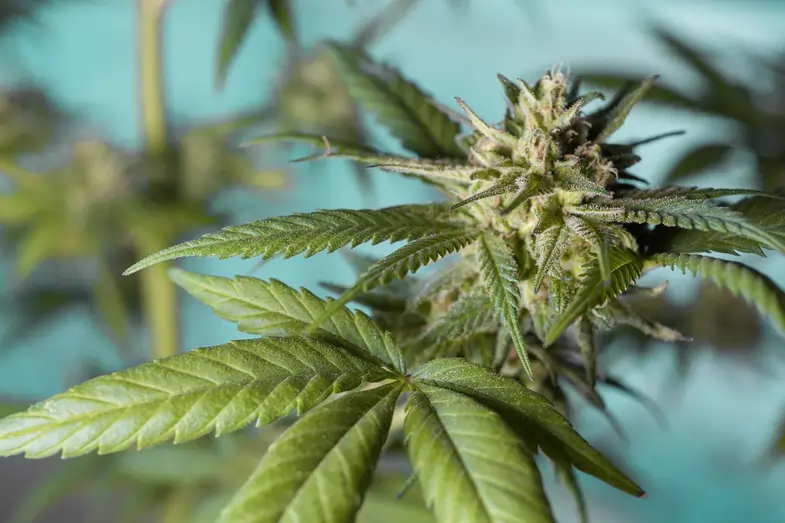

External Factors: The Environmental Symphony of Ripening
The journey to harvest is not solely determined by the plant’s internal clock; external environmental factors play a significant role in orchestrating the final stages of maturation.
For outdoor cultivators, the changing seasons are a primary consideration. The impending threat of frost, heavy rains, or excessively high humidity can necessitate an earlier harvest to prevent damage or loss. Monitoring weather forecasts and understanding the local climate patterns are essential for making informed decisions about harvest timing. Unexpected early frosts can severely damage or even kill plants, while prolonged periods of rain can increase the risk of bud rot, a devastating fungal infection that can quickly ruin an entire harvest.
Indoor cultivation offers a greater degree of control over the environment, allowing for more precise manipulation of factors like temperature, humidity, and light. Maintaining optimal temperature ranges during the flowering stage is crucial for resin production and terpene development. Excessively high temperatures can degrade terpenes, diminishing the aroma and flavor of the final product. Humidity levels also play a critical role, particularly during the later stages of flowering. High humidity can create a breeding ground for mold and mildew, while excessively low humidity can stress the plants.
Precisely controlling the light cycle is fundamental for photoperiod-sensitive strains. Maintaining the correct dark period is essential for triggering and sustaining the flowering response. Light leaks during the dark period can disrupt the flowering process, potentially leading to hermaphroditism or reduced yields.
Even in controlled indoor environments, it’s important to be vigilant for signs of stress or disease. Nutrient imbalances, pest infestations, or environmental fluctuations can all impact the plant’s health and maturation, potentially requiring adjustments to the planned harvest schedule. Therefore, while genetics provides the blueprint, the environment dictates the pace and conditions under which that blueprint unfolds, making careful environmental management a cornerstone of successful harvesting.
The Art of the Cut: Methods and Timing of Harvesting
Once the decision to harvest has been made, the next step involves the practicalities of the harvest itself.
The method employed can vary depending on the scale of the operation and individual preferences. Some cultivators prefer to harvest the entire plant at once, cutting it off at the base of the main stem. This approach can be efficient, particularly when dealing with a large number of plants. Others opt for a more gradual approach, harvesting branches individually as they reach optimal maturity. This method, sometimes referred to as “staggered harvesting,” allows for the selective harvesting of the most mature buds while giving less developed ones more time to ripen. This can be particularly beneficial when dealing with strains that exhibit uneven maturation patterns within the same plant.
The timing of the harvest during the day can also be a consideration for some cultivators. There is a common belief that terpene levels are at their peak in the early morning hours, before the heat of the day can cause them to volatilize. Harvesting at this time is thought to potentially enhance the aroma and flavor of the final product.
However, scientific evidence definitively supporting this claim is limited, and the decision often comes down to personal preference and anecdotal experience.
Regardless of the chosen method, it is essential to have the necessary tools prepared. Sharp pruning shears or scissors are crucial for making clean cuts and minimizing damage to the plant. Wearing gloves is also recommended to prevent the transfer of oils and contaminants to the precious buds.
The harvested plants or branches should be handled carefully to avoid bruising or damaging the delicate trichomes, which are responsible for the plant’s potency and aroma. Whether harvesting the entire plant or individual branches, the process should be carried out with care and attention to detail, setting the stage for the subsequent crucial steps of drying and curing.
Beyond the Chop: Drying and Curing for Peak Quality
The act of harvesting is just the beginning of the journey towards a high-quality final product. The subsequent processes of drying and curing are equally, if not more, critical in shaping the flavor, aroma, smoothness, and overall quality of the harvested marijuana.
Drying is the initial step, aimed at reducing the moisture content of the buds to a level that prevents mold and mildew growth while preparing them for curing. This is typically achieved by hanging the harvested plants or branches in a dark, well-ventilated room with controlled temperature and humidity.
The ideal temperature range for drying is generally between 60-70°F (15-21°C), with humidity levels around 50%. Maintaining these conditions ensures a slow and even drying process, which is crucial for preserving terpenes and cannabinoids. Too rapid drying can lead to a harsh and unpleasant smoke, while too slow drying increases the risk of mold. The drying process can typically take anywhere from 7 to 14 days, depending on the size and density of the buds and the environmental conditions. A common indicator that the buds are adequately dried is when small stems snap rather than bend.
Once the buds are sufficiently dried, the curing process begins.
Curing is a slow and controlled decomposition process that further enhances the flavor, aroma, and smoothness of the smoke. It involves placing the dried buds in airtight containers, such as glass jars, and storing them in a cool, dark place. The jars should be filled loosely, leaving some headspace for airflow.
During the initial stages of curing, it’s important to “burp” the jars daily, opening them briefly to allow for the exchange of air and the release of excess moisture. This helps to prevent the buildup of humidity inside the jars, which could lead to mold. Over time, the frequency of burping can be reduced.
The curing process can last anywhere from a few weeks to several months, with longer curing times generally resulting in a more refined and flavorful product. During curing, residual chlorophyll breaks down, leading to a smoother smoke and improved flavor. Terpenes continue to develop and mature, enhancing the aroma.
Read also: The different methods to cultivate cannabis
Steering Clear of Setbacks: Common Harvesting Mistakes
Even with diligent effort, several common pitfalls can compromise the quality of the marijuana harvest.
One of the most frequent errors is harvesting too early. Impatience can lead cultivators to harvest before the trichomes have reached their peak milky white stage, resulting in lower potency and underdeveloped flavors.
Conversely, waiting too long to harvest can also be detrimental. As the trichomes transition to an amber hue, THC begins to degrade into CBN, potentially leading to a more sedative effect than desired and a loss of some of the more nuanced flavors and aromas. Accurate observation of the trichomes with a magnifying tool is crucial to avoid this mistake.
Another common mistake lies in improper drying and curing techniques. Drying the buds too quickly, often due to insufficient humidity or excessive heat, can lead to a harsh and unpleasant smoke. Failing to adequately control humidity during the drying and curing stages can also result in mold or mildew growth, rendering the harvest unusable. Over-packing the curing jars or neglecting to burp them regularly can also create an environment conducive to mold.
Furthermore, improper handling of the harvested buds can lead to the loss of valuable trichomes. Rough handling or excessive trimming before drying can dislodge these delicate resin glands, reducing the potency and aroma of the final product.
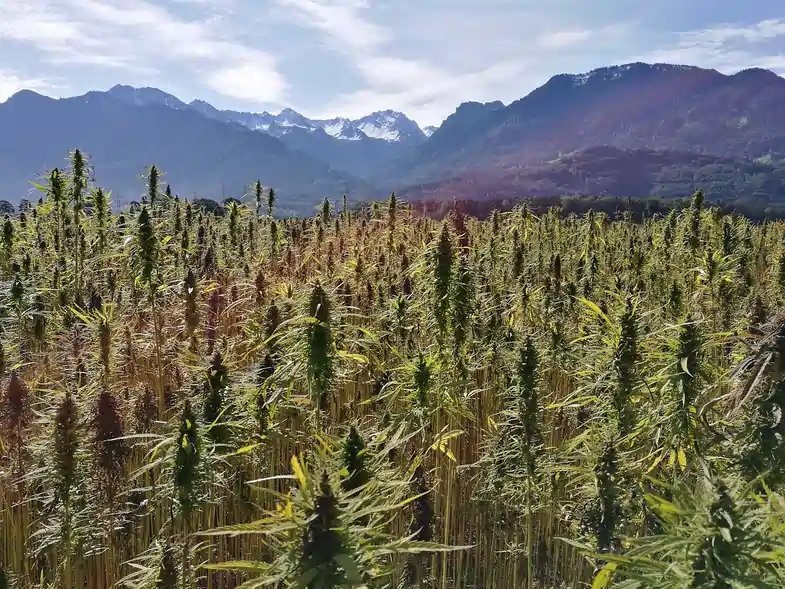

A Symphony of Timing and Technique
The journey from seed to harvest is a testament to the intricate relationship between nature and nurture.
Recognizing the optimal marijuana harvesting time is not merely a matter of counting days; it demands a keen understanding of plant biology, the ability to interpret visual cues, and an appreciation for the influence of environmental factors. The transformation from vibrant, growing plant to a source of desired effects hinges on this crucial decision.
Mastering the art of timing, from the microscopic examination of trichomes to the broader consideration of strain-specific maturation and environmental influences, empowers cultivators to unlock the full potential of their efforts. The careful execution of harvesting techniques, followed by meticulous drying and curing, further refines the final product, ensuring the preservation and enhancement of its unique qualities. It is through this thoughtful and informed approach that the fruits of labor are realized, culminating in a harvest that embodies both potency and the nuanced characteristics that define each unique strain.
The information provided in this article is intended for informational purposes only and should not be interpreted as encouraging or condoning any activities that violate applicable laws. Readers are advised to comply with all relevant legal regulations regarding cannabis cultivation and use.
If you are interested in the world of cannabis we recommend you take a look at the Justbob shop: on our e-commerce you can find many legal cannabis products for enthusiasts like you, all perfectly legal.
Would you like some examples?
CBD buds selected for discerning collectors. Various formats of high quality CBD oil. Legal Hash with a high cannabidiol content.
And much more!
Marijuana harvesting time: takeaways
- The timing of marijuana harvesting is paramount, significantly influencing the final product’s potency, flavor profile, and overall quality. Recognizing the precise moment for harvest involves a careful assessment of various plant indicators, most notably the trichomes, which reveal the plant’s cannabinoid development stage. Harvesting too early may result in lower potency and underdeveloped flavors, while harvesting too late can lead to the degradation of THC into CBN, producing a more sedative effect. Mastering the art of timing ensures the maximization of desired characteristics, tailored to the cultivator’s specific preferences and the unique attributes of the strain.
- Several observable characteristics of the cannabis plant serve as crucial indicators of its harvest readiness. Examining the trichomes, the resin glands on the buds, through magnification is essential; their transition from clear to milky white signifies peak THC levels, while an amber hue suggests THC degradation. Alongside trichome observation, assessing the pistils—the hair-like strands on the flowers—for darkening and curling, alongside the overall density and firmness of the buds, provides a holistic view of the plant’s maturity. Paying attention to these visual cues, in conjunction with an understanding of the specific strain’s maturation timeline, allows for a more informed decision regarding the optimal harvest window.
- Proper harvesting techniques extend beyond just the act of cutting down the plant. The subsequent processes of drying and curing are equally critical in preserving and enhancing the quality of the harvested marijuana. Drying in a controlled environment with appropriate temperature and humidity levels is crucial for preventing mold and ensuring a smooth experience. Following this, a meticulous curing process in airtight containers allows for the gradual breakdown of chlorophyll and the further development of terpenes, resulting in improved flavor, aroma, and overall quality. Neglecting these post-harvest steps can undermine even the most perfectly timed harvest, highlighting their indispensable role in the final product’s excellence.
Marijuana harvesting time: FAQ
How critical is the timing of marijuana harvesting, and what are the potential consequences of harvesting too early or too late?
The timing of marijuana harvesting is exceptionally critical, acting as a linchpin that significantly influences the final product’s characteristics. Harvesting too early, before the plant has reached its full potential, often results in lower potency as the cannabinoid and terpene profiles are not yet fully developed. The flavors and aromas may be less pronounced and the overall experience can be less satisfying, potentially lacking the desired intensity or complexity. Conversely, delaying harvest for too long can lead to the degradation of THC, the primary psychoactive compound, into CBN, a cannabinoid known for its more sedative effects. This shift in the cannabinoid profile can alter the intended experience, producing a heavier, more lethargic effect rather than a more energetic or creative one. Furthermore, overripe buds can become more susceptible to mold and may lose some of their desirable aromatic compounds, impacting the overall quality and appeal of the harvest. Therefore, pinpointing the optimal harvest window is crucial for maximizing potency, flavor, and the desired effects.
What are the key visual indicators that a marijuana plant is ready for harvest, and which is considered the most reliable?
Several visual cues indicate a marijuana plant’s readiness for harvest, but examining the trichomes is widely considered the most reliable method. Trichomes, the tiny resin glands on the buds and surrounding leaves, undergo a color transformation as the plant matures. Initially, they appear clear, indicating that cannabinoid production is still underway. As the plant approaches peak maturity, the trichomes turn a cloudy or milky white, signaling the highest concentration of THC. As the plant continues to mature, some trichomes will transition to an amber color, indicating the degradation of THC into CBN. Observing this trichome color progression through a magnifying glass or jeweler’s loupe provides the most accurate indication of the plant’s cannabinoid profile. Other indicators include the pistils, the hair-like strands on the flowers, which darken and curl inward as the plant matures. While the yellowing of fan leaves can also signal late-stage maturity, it’s less reliable as it can also indicate nutrient deficiencies. The overall density and firmness of the buds can also provide clues, but trichome observation remains the gold standard for determining harvest readiness.
What is the importance of drying and curing after harvesting marijuana, and what are the key steps involved in these processes?
Drying and curing are absolutely crucial post-harvest processes that significantly impact the quality, flavor, and overall experience of marijuana. Drying removes excess moisture from the buds, preventing the growth of mold and bacteria, which can ruin an entire harvest. The key steps involve hanging the harvested plants or branches in a dark, well-ventilated space with controlled temperature (around 60-70°F) and humidity (around 50%). This slow and even drying process preserves terpenes and cannabinoids. Once the buds are sufficiently dry, indicated by small stems snapping rather than bending, the curing process begins. Curing involves placing the dried buds in airtight containers, like glass jars, stored in a cool, dark place. For the first week or two, the jars should be “burped” daily, opened briefly to release excess moisture and prevent mold. This process allows for the slow breakdown of chlorophyll, which contributes to a smoother smoke and enhances the flavors and aromas as terpenes continue to develop. A proper curing process, which can last from a few weeks to several months, significantly improves the overall quality, potency, and enjoyment of the harvested marijuana.

